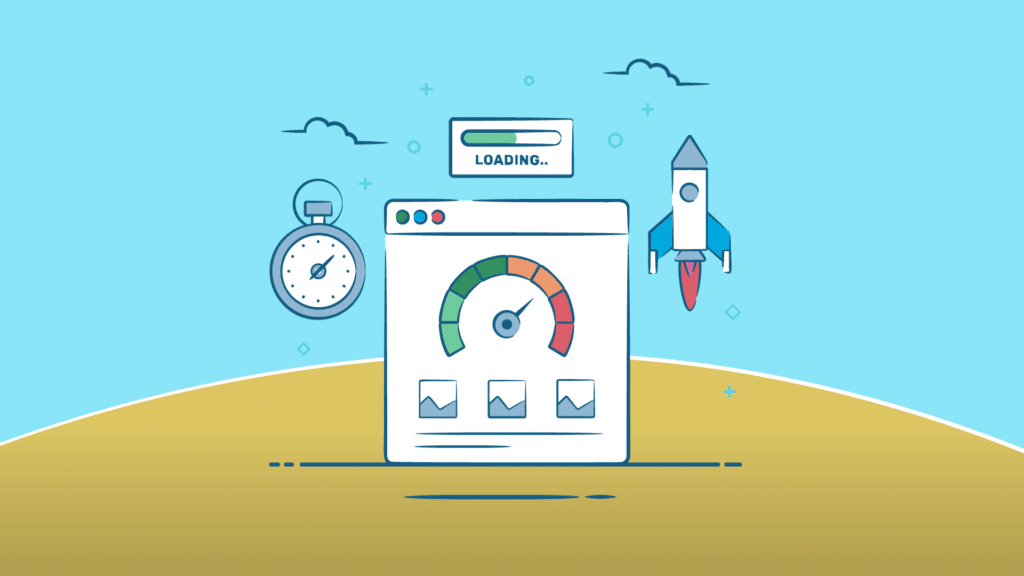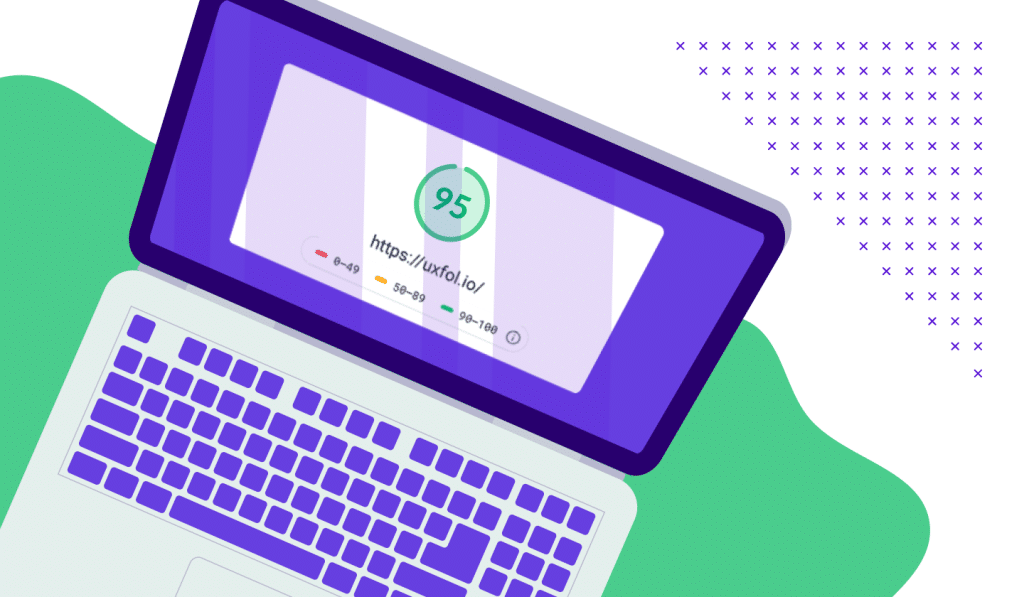Introduction
In today’s digital landscape, the performance of your website, particularly its speed, plays a pivotal role in determining the quality of improving user experience and engagement. In an age where information is expected at the click of a button, the patience of online visitors is at an all-time low. Websites that take too long to load are often perceived as inefficient, leading to a diminished user experience. This not only frustrates users but can also significantly harm the reputation and effectiveness of your online presence. With a multitude of options available at their fingertips, users are less likely to wait for a slow website to load, choosing instead to seek information or services elsewhere. This shift in user behavior emphasizes the need for speed in our increasingly digital world.
The repercussions of a slow-loading website extend beyond user dissatisfaction. High bounce rates – where visitors leave a site almost immediately after arriving – are a common consequence of poor website performance. This not only reduces the effectiveness of your site in engaging with your audience but can also have a detrimental effect on your search engine rankings. Search engines, like Google, prioritize user experience as a key factor in their ranking algorithms. Therefore, a website that loads slowly is less likely to appear at the top of search results, reducing its visibility and potential traffic. In the competitive online market, where visibility is paramount, this can translate into lost opportunities and decreased revenue.
Recognizing these challenges, this comprehensive guide aims to provide you with effective strategies to improve website load times. The focus will be on delivering actionable insights and techniques that can be implemented to ensure your website operates at optimal speed. By enhancing the speed of your website, you can offer a more smooth and enjoyable experience for your visitors, thereby increasing user satisfaction, engagement, and retention. Whether you are a website owner, a developer, or simply interested in understanding the dynamics of web performance, this guide will equip you with the knowledge and tools necessary to make your website fast, efficient, and more appealing to your audience.

Why Speed Matters: The Key to Improve Website Performance
Improving website performance is crucial in today’s fast-paced online environment. Websites with faster load times not only enhance user satisfaction but also contribute to higher SEO rankings. Understanding the technicalities and user expectations can significantly aid in optimizing your site’s speed.
Improving User Experience Design: Crafting Faster, More Responsive Websites
Incorporating experience design into your strategy is essential to improve website load times. This involves designing with performance in mind – optimizing images, streamlining content, and ensuring a responsive layout. Experience design is not just about visual appeal; it’s about creating an efficient, user-centric interface.
Diagnosing Delays: When Your Website Not Loading Quickly
Confronting the challenge of a website not loading quickly requires a deep dive into potential causes. It could be due to unoptimized images, bulky code, or server issues. Regular audits and performance monitoring can help identify and rectify these issues promptly.
Enhancing User Experience Through Faster Load Times
Improving user experience is intrinsically linked to how quickly your website loads. A site that is fast and easy to navigate ensures a positive user experience, encouraging visitors to stay longer and engage more with your content.
Streamlining Code for Speed: The Backend of Website Performance
To further improve website speed, focus on optimizing backend elements like JavaScript and CSS. Efficient coding, using external hosting for large files, and minimizing redirects can significantly boost your site’s load time, enhancing the overall user experience.
Utilizing Tools for Speed Optimization: A Guide to Better Performance
Leverage tools like Google PageSpeed Insights and GTmetrix to analyze and improve website load times. These tools provide actionable insights, helping you to make informed decisions about optimizations that can significantly impact site speed.
Mobile Optimization: A Necessity for Today’s Websites
With a significant portion of web traffic coming from mobile devices, optimizing your website for mobile is crucial. A mobile-responsive design, faster load times, and optimized media are key to providing a seamless experience for mobile users.
Ongoing Maintenance: Keeping Your Site Fast and Functional
Regular maintenance is crucial to sustain and improve website performance. Updating content, optimizing databases, and refreshing layouts can help maintain a consistently high speed, ensuring your site remains competitive and user-friendly.
The Role of Web Hosting in Website Performance
Choosing the right web hosting service is pivotal in determining your website’s load time. Invest in a reliable, high-performance hosting solution that can support your site’s bandwidth and traffic needs efficiently.

Conclusion
In the ever-evolving landscape of the digital world, enhancing website load times is not a one-off task but a continuous journey towards improving user experience. A website’s performance is a key player in its ability to attract and retain users, making it an indispensable aspect of online success. By placing a strong emphasis on experience design, the intricacies of a website can be fine-tuned to not only look appealing but also to function efficiently. This involves a proactive approach to identifying and resolving issues that impede website speed, such as heavy images or inefficient coding. Moreover, it’s crucial to recognize that a website’s load time directly influences user engagement and satisfaction. In an age where online users expect swift and seamless access to information, any delay can be detrimental to the perceived value of your website.
Regular maintenance and updates are vital to keep up with the dynamic nature of web technologies and user expectations. This maintenance goes beyond mere aesthetic updates; it encompasses optimizing the website’s backend processes, staying updated with the latest SEO practices, and ensuring compatibility across various devices and browsers. A website that loads quickly and functions smoothly is not just a reflection of technical proficiency, but also an indication of a brand’s commitment to providing a superior user experience. In the digital realm, where first impressions are often the last, the speed and responsiveness of your website can set you apart from the competition.
Ultimately, the goal is to create a website that not only meets but exceeds user expectations. In the digital world, where countless options are available at the click of a button, speed and efficiency are not mere luxuries but essential components of a successful online presence. By continuously striving to improve website load times, you are investing in a more engaging, accessible, and user-centric online experience. This commitment to excellence is what can elevate your website from being just another online presence to becoming a preferred destination for users.
How would you improve the user experience?
Optimizing the website’s loading speed, improving navigation and site structure, enhancing mobile responsiveness, creating clear and concise content, using relevant and descriptive headings, optimizing images and multimedia, implementing clear calls-to-action, ensuring easy contact and support options, and conducting user testing for continuous improvements.
How do you optimize user experience?
Optimizing user experience involves enhancing website performance, usability, and accessibility. Here are some key strategies to improve user experience:
Improve website speed by optimizing code, compressing images, and utilizing caching techniques.
Ensure clear and intuitive website navigation to help users find information easily.
Create mobile-friendly designs that adapt well to different screen sizes and devices.
Enhance website accessibility by providing alternative text for images and captions for videos.
Use readable fonts, appropriate font sizes, and sufficient color contrast for easy readability.
Format content with headings, bullet points, and shorter paragraphs to improve readability.
Implement responsive design to ensure consistent user experience across various devices.
Include relevant and engaging multimedia elements like images, videos, and interactive elements.
Ensure that forms and checkout processes are straightforward, requiring minimal user effort.
Regularly test and monitor website performance, user feedback, and behavior to identify areas for improvement.


